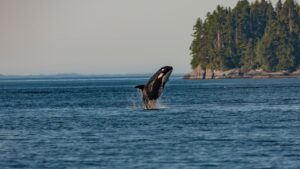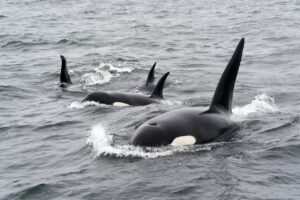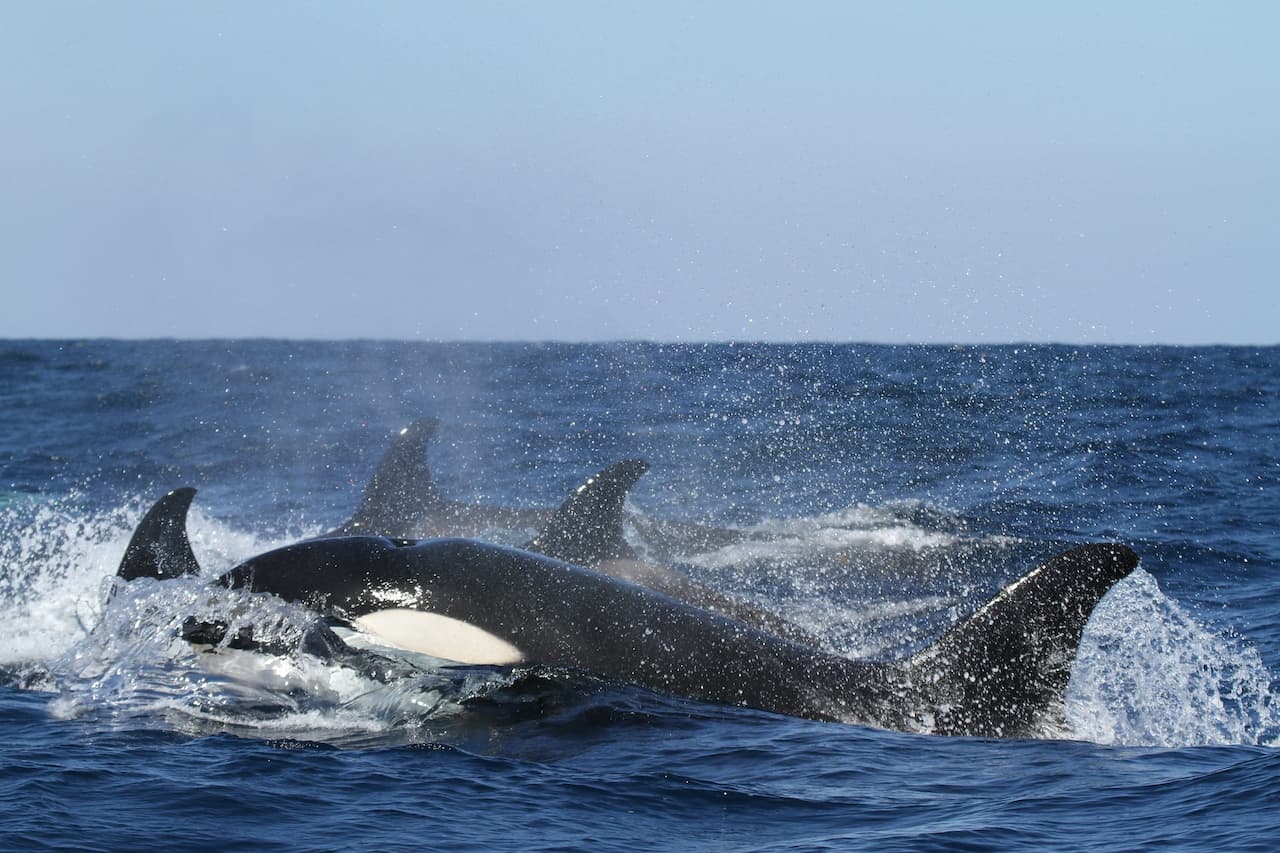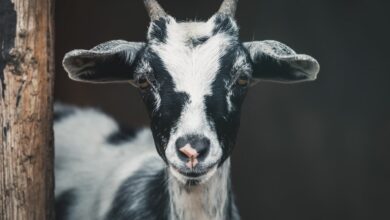Orca Facts
The orca is often regarded as one of the most dangerous animals in existence. Because of its distinctive black-and-white pattern, it can be recognized quickly and is frequently employed as a form of whimsical maritime imagery.
Orcas are apex predators, which means that they are at the top of the food chain and are not as harmless as these photographs make them look to be.
These gregarious creatures are well-known for a variety of characteristics, including their appearance and the social behavior of traveling in pods, which they engage in. However, there is more to these fascinating creatures than meets the eye, so here are eight facts about orcas that are not often known.
Now, let’s take a look at some interesting facts about Orcas:
The Orcas Are Not a Type of Whale
Orcas are sometimes referred to as killer whales, and their size certainly justifies their inclusion in that group of enormous mammals. Orcas, on the other hand, are not whales but rather a subspecies of dolphins (and the largest species of dolphin, at that). They are classified as members of the family Delphinidae, which includes other species of marine dolphins.
The term “whale killers” may have been given to orcas by sailors who witnessed the orcas’ fierce hunts of whales and other large marine creatures and mistook them for whale killers as a result. The meaning of the phrase later became reversed as time went on for whatever reason.
Their Development is Culturally Driven
Orcas and humans both have the capacity to evolve as a result of their culture, according to research that was carried out by a specialist in killer whale genetics named Andrew Foote.
In a study that was conducted in 2016, Foote and a team of researchers evaluated the genomes of several pods of orcas and found that differences in genes were associated with differences in culture, such as group social behaviors.
One of the clearest illustrations of this can be seen in the hunting behavior of the orcas; various pods will pursue different kinds of prey with a variety of different hunting strategies.
These disparities ultimately lead to variances in genomes, which means that cultural groupings eventually become genetically diverse from one another.
Humans were the only creatures that were known to have evolved depending on their culture prior to this revelation.
They Experience Menopause
The capacity to have offspring is something that many creatures of the animal kingdom keep right up to the moment they pass away. On the other hand, there are some animals that defy this rule, such as the orca and, of course, humans.
Why might a species develop to reach a point in its life cycle when it no longer reproduces? This has to do with the social behavior of orcas, which consists of residing in groups known as pods.
The older females in the pod are progressively linked to everyone else in the pod as a result of the fact that both sons and daughters remain in the pod throughout their age.
The fact that so many members of the pod share genetic material is a compelling argument in favor of refraining from reproduction in favor of directing and instructing one’s offspring, whether they be children, grandkids, or great-grandchildren.
Clans of Orcas Have Their Own Unique Languages
Orcas live in tight-knit family units referred to as pods, which combine to create larger social organizations known as clans. The language that a clan or even an individual pod speaks is one of the characteristics that sets it apart from others.
Clans are said to “speak” a variety of entirely unique languages. Trying to have a discussion between a person who speaks English, someone who speaks Russian, and someone who speaks Chinese if these huge groups were to get together would be like that.
Although all members of a certain clan share a common language, those members’ “dialects” are easily distinguishable from one another. It’s similar to how people from the South, New England, and the Midwest in the United States all speak English with their own distinct accents.
They’re The Second-Most-Common Animal
Orcas are the second most common mammalian species on the planet after humans. The species inhabits regions all the way from the Arctic to the Antarctic, and it can be discovered in waters of all temperatures, from the icy waters of the north and south to the warm waters along the equator.
It has even been spotted in the waters of the Hawaiian Islands, the Galapagos Islands, and the Gulf of California.
Orcas have not only been detected in all of the oceans around the world but they have also been observed in rivers that contain freshwater. As it sought fish, one of them even swam more than 100 miles upstream in the Columbia River in Oregon.
However, despite their widespread distribution, several populations of orcas are thought to be at risk of extinction.
Orcas Are Senseless to Odors
Because orcas lack an olfactory system, it is highly likely that they are unable to detect odors in their environment. Although at first glance this may appear to be a disadvantage, there is in fact a lot of logic behind it.
In contrast to sharks, who rely on their sense of smell to locate their food, orcas utilize their acute hearing to engage in a process known as echolocation. This involves making sounds and then listening for any echoes to determine whether there are any objects or animals in their immediate vicinity.
Orcas are not the only whales that lack this smelling mechanism; dolphins and the majority of toothed whales also lack it, thus orcas are not alone in having this deficit.
They Possess Very Large Brains
Orcas have the second-largest brains of any marine animal, with only sperm whales having larger brains than orcas. They may weigh up to 30 kilograms (about 15 pounds).
Some researchers estimate a person’s level of intellect based on their head size, more precisely the proportion of their brain weight to their total body weight. Using this metric, the brain size of an orca is approximately 2.5 times greater than the average brain size of other mammals.
However, it is thought that orcas’ intelligence is far higher than what would be predicted based on the size of their brains due to their remarkable social, linguistic, and echolocation abilities.
Orca Frighten White Sharks
It is the white shark that runs away whenever orcas and white sharks come into conflict with one another. During the course of this study, which took place at the Monterey Bay Aquarium in California, researchers tracked a group of white sharks for an extended period of time.
These sharks would always feed in the same location, but when two pods of orcas showed up, the sharks left and did not come back for several months.
There is a possibility that orcas are pursuing white sharks as their prey. Orcas are said to intimidate white sharks into leaving their meal in the region, according to a different belief.
In any case, white sharks will not return to the same site for up to a year, regardless of whether the orcas are only passing by or not.







